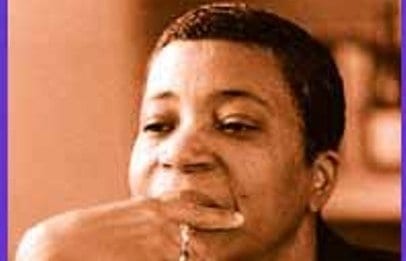“Marie Ursule woke up this morning knowing what morning it was and that it might be her last.” This, the first sentence of Dionne Brand’s At The Full And Change Of The Moon, prefaces a mass poisoning by a slave women in Trinidad in the eighteenth century.
But Marie Ursule is unable to fathom poisoning her daughter, Bola. So Bola is whisked away by her maroon father, Kamena, who cannot find his way back to the fugitive slave community he inhabits. He must dream his way there like he did initially, but this time his dream slips slowly into something else – confusion, apprehension and the desire to leave the child and look out for himself.
Bola and Kamena end up in the confines of the plantation of two Ursuline nuns. Bola becomes fascinated with whale watching and gives birth to her many children, on whom the novel partially centres.
Marie Ursule’s action propels an “explosive migration” across the Americas and Europe, echoing, even repeating, the migrations of transatlantic slavery. These two traumatic events – mass murder and migration – lie at the core of the novel.
At The Full And Change Of The Moon is about the violent ruptures which have produced the black diaspora. These ruptures have ensured the scattering of black people all over the world. Marie Ursule’s actions are implicated in the scattering.
The novel crosses centuries, moving from the eighteenth to the twentieth century to tell a tale of black displacement, adaptation and the making of life. Even when life is lived on “the margins of other lives and other peoples lives” these descendants of traumatic acts attempt to make life livable.
The novel is created out of historical and personal fragments, found persons, sentences and events, and a melange of happenings and situations which Brand crafts from what she calls “impression.” These fragments are partial pieces of a complex black diasporic consciousness and its ephemeral sensibility.
A range of male characters occupy Brand’s attention in this novel. From Sones, the colonial British soldier who returns to Trinidad a ghost of his former self; and Priest, who moves from good to bad, finding no contradiction in the shift; to Emmanuel Greaves, “a good man” whose life is fashioned and ordered by his wife; and Adrian, “a soft man” who cannot tolerate the regime of masculinity and can find no alternative.
These male characters are some of the most arresting black men in recent literature. Even as they fail in their personal lives, they represent a range of interesting and complex masculinities.
Brand’s art is part of a broad and wide conversation that draws upon a specific understanding of the Americas as a home to blackness. It is in this way – as we read deep into the crevices of Brand’s art – that political positions might emerge.
But Brand’s writing is not polemical. Subtlety and nuance require that we rethink the Americas as we have come to live and know them.
Reading Brand, we encounter Derek Walcott, Toni Morrison, Patrick Chamoiseau and a host of other writers, black and otherwise, deeply layered into her writing. These are all writers engaged in a literary project to return, or give, to us, a view of the Americas that we might have passed by or not fully apprehended.
At The Full And Change Of The Moon is further proof that Brand is one of the most eloquent wordsmiths and observers of culture today.
At The Full And Change Of The Moon.
By Dionne Brand.
Knopf Canada.
208 pages. $32.95.

 Why you can trust Xtra
Why you can trust Xtra


